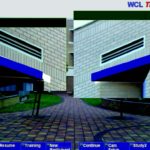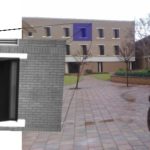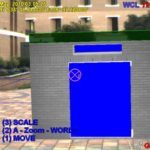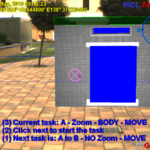Publication
 Thuong Hoang, Bruce Thomas, “Multiple Camera Augmented Viewport: An Investigation of Camera Position, Visualizations, and the Effects of Sensor Errors and Head Movement”, in Proceedings of the 21st International Conference on Artificial Reality and Teleexistence, Osaka, Japan 2011.
Thuong Hoang, Bruce Thomas, “Multiple Camera Augmented Viewport: An Investigation of Camera Position, Visualizations, and the Effects of Sensor Errors and Head Movement”, in Proceedings of the 21st International Conference on Artificial Reality and Teleexistence, Osaka, Japan 2011.
[pdf]
 Thuong Hoang, Bruce Thomas, “Augmented Viewport: Towards precise manipulation at a distance for outdoor augmented reality wearable computers”, in Mobile collaborative augmented reality: recent trends, 1st edn., Springer, 2011.
Thuong Hoang, Bruce Thomas, “Augmented Viewport: Towards precise manipulation at a distance for outdoor augmented reality wearable computers”, in Mobile collaborative augmented reality: recent trends, 1st edn., Springer, 2011.
[pdf]
 Thuong Hoang, Ross Smith, Bruce Thomas, “Demo – Augmented Viewport: An action at a distance technique for outdoor augmented reality using wearable computers”, in Proceedings of the 20th International Conference on Artificial Reality and Telexistenc, Adelaide, Australia 2010.
Thuong Hoang, Ross Smith, Bruce Thomas, “Demo – Augmented Viewport: An action at a distance technique for outdoor augmented reality using wearable computers”, in Proceedings of the 20th International Conference on Artificial Reality and Telexistenc, Adelaide, Australia 2010.
 Thuong Hoang, Bruce Thomas, “Augmented Viewport: An action at a distance technique for outdoor AR using distant and zoom lens cameras”, in Proceedings of the 14th IEEE International Symposium on Wearable Computer – ISWC , Seoul, South Korea 2010.
Thuong Hoang, Bruce Thomas, “Augmented Viewport: An action at a distance technique for outdoor AR using distant and zoom lens cameras”, in Proceedings of the 14th IEEE International Symposium on Wearable Computer – ISWC , Seoul, South Korea 2010.
[pdf]
Description
We implement the Augmented Viewport concept, a technique for manipulating objects located at a distance for outdoor augmented reality using wearable computers. Augmented viewport is inspired by the virtual viewport window that has been widely used in virtual reality systems. The technique shows a virtual windows, floating in front of the user, showing a viewpoint from a distant location (as pictured below). The technique uses physical cameras, which are placed at a distant location or which can zoom closer to a distant location, to provide the physical world information for the viewport window.

The view through the wearable computer without the viewport

The viewport window shows the virtual blue boxes which are located at a distance
Through the viewport window, the user can perform selection and transformations, such as moving, rotating, and scaling, to distant virtual objects as if they are located close to the user. A study is conducted in which many users trialled the technique. It is proven to enhance the precision in transformation task. By bringing the distance closer to to user, the technique reduces time and effort in interacting with virtual objects outdoors.
